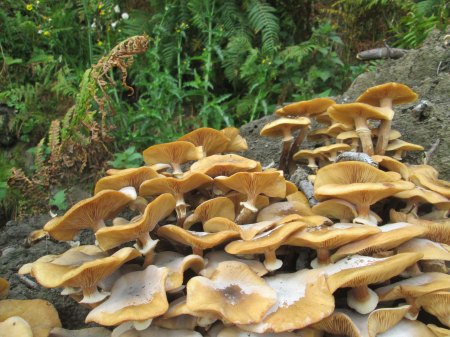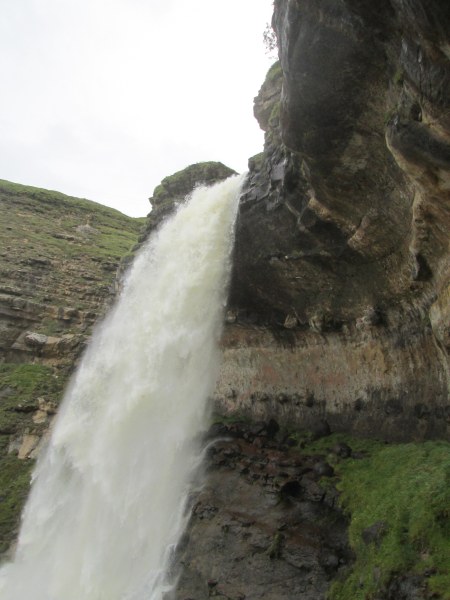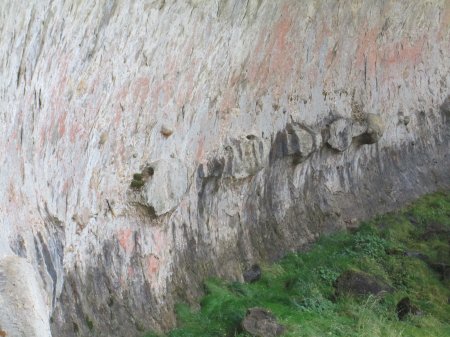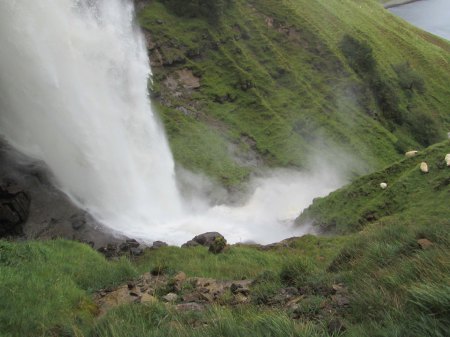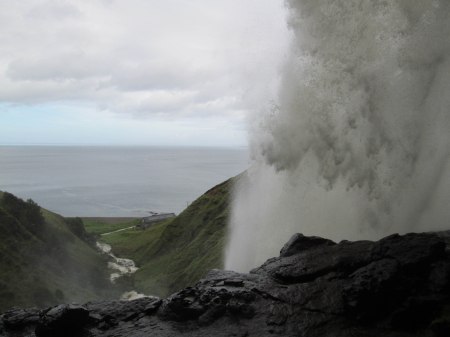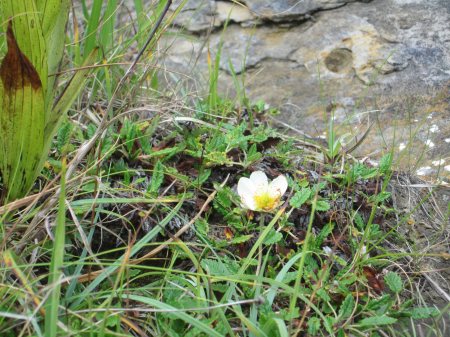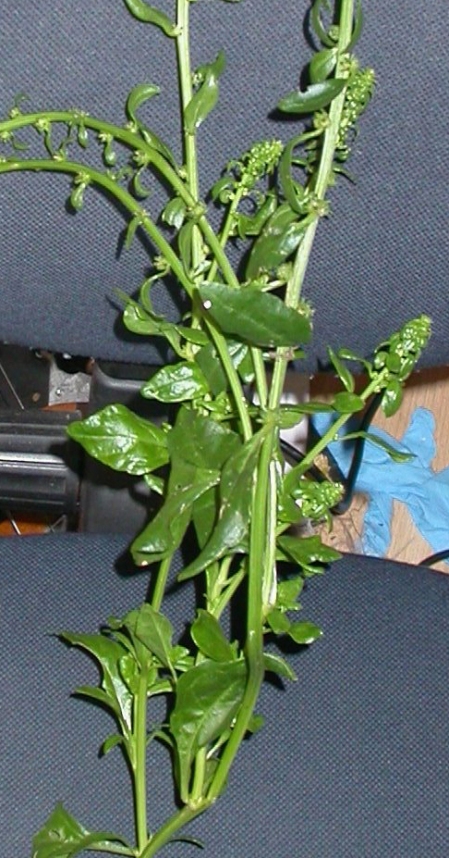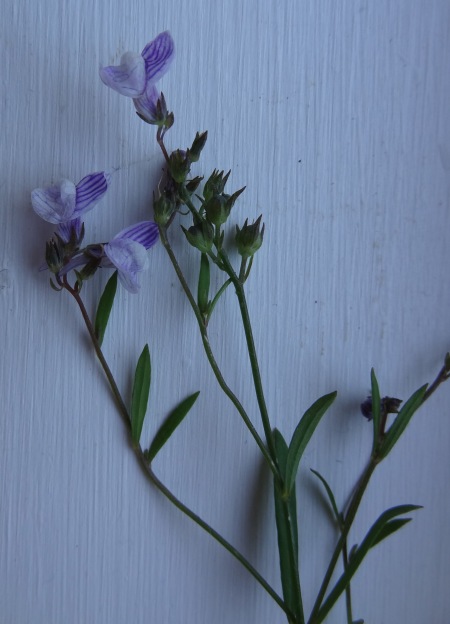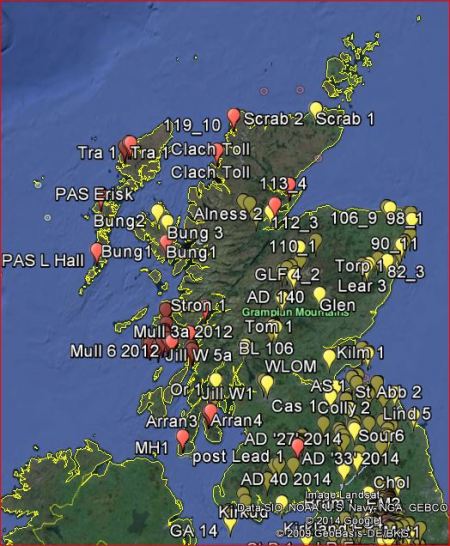Today I have made a rod for my own back. In the Fearns – Hallaig area I had two sorts of objective in mind – refinding and refreshing three pre-2000 records and recording separately the tiny bits of land that lie in NG6037 and NG6038.
The first part was only moderately successful. I re-found the only known site for Equisetum telmateia (Great Horsetail) in NG53.
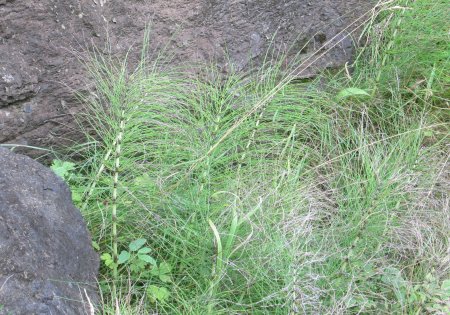
Equisetum telmateia north of Hallaig
However, I failed on Elymus caninus (Bearded Couch) and Torilis japonica (Upright Hedge-parsley). As these are pre-2000 records the 6-figure grid references are from before the GPS signal was unscrambled but I have a reasonably clear memory of the Torilis japonica site. Today the site was covered in bracken which may just be hiding it or may have seen it off.
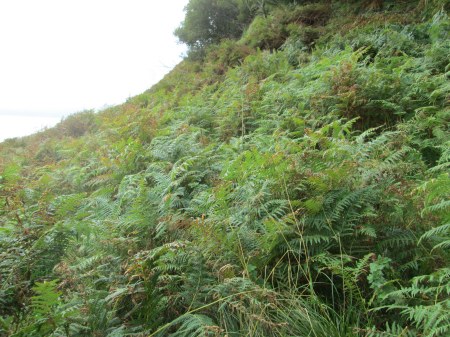
Torilis Site
The other part of the exercise will mean a fair amount of office work at some point. In, for example, my Raasay Flora I say that there are five 10 km squares that cover Raasay NG53, 54, 55, 64 & 65 and that I have used 98 recording units based on 1 km squares. After today I need to change that to six 10 km squares, adding NG63, and 100 recording units. I also say that thirteen specie are known in all 98 recording units. Now I would have to say that only one (Sagina procumbens (Procumbent Pearlwort)) is known in all 100 units.
I am almost regretting having recorded in NG6037 and NG6038 today. The former has a long narrow strip of land with vascular plants at one point reaching 11 metres into it and the latter a small area with vascular plants reaching 15m into it. I recorded 51 taxa in the former and 10 in the latter (both figures subject to minor revision once I actually put the data into the database).
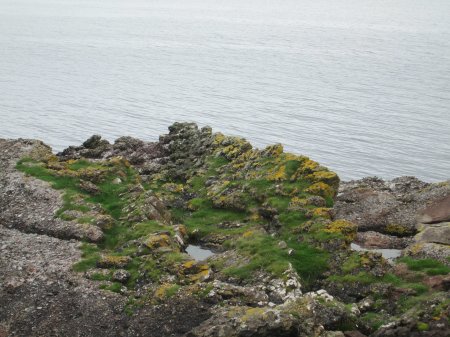
The entire vegetation of tetrad NG63E
Previously I had just amalgamated any records into the adjacent 1 km squares to the west. However, NG63 is a different 10km square and one that doesn’t have a lot of land – NE Scalpay, most of the Crowlins and a tiny piece of the mainland and Eilean Bà. And the two 1 km squares show up as two tetrads with no records on central databases. I shall worry about what to do about these results in the Raasay Flora in due course.
While I was in NG63 I recorded two galls, the very common Thyme Gall caused by a mite, Aceria thomasi, and the slightly less frequent Nettle Pouch Gall caused by the gall midge Dasineura urticae.
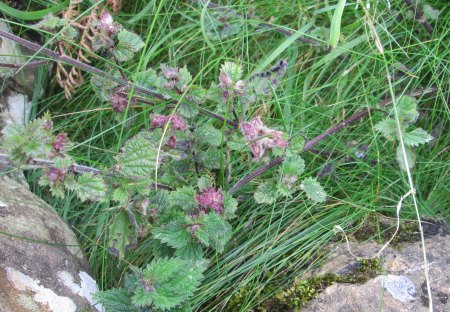
Nettle Pouch Gall
Other items of note included sea-level Saxifraga aizoides (Yellow Saxifrage) and some fine fungi such as Fly Agaric (Amanita muscaria), Chanterelle (Cantharellus cibarius) – delicious – and the following which I have not yet attempted to identify: